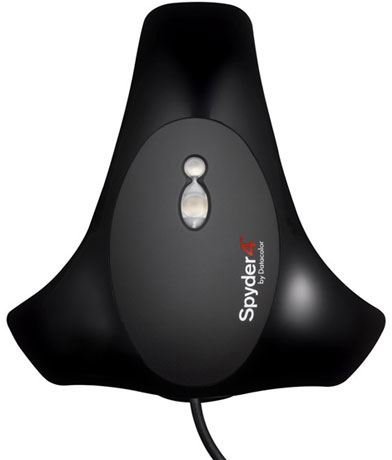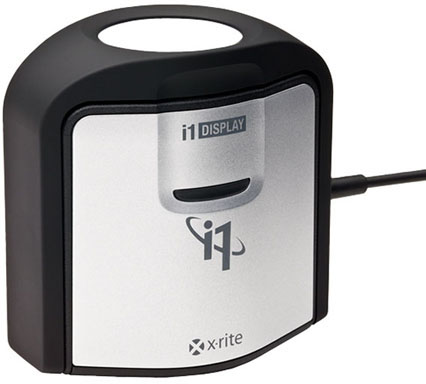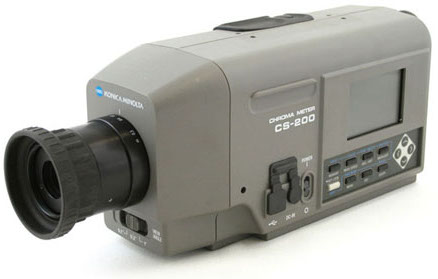Display Calibration 101: Step-By-Step With Datacolor's Spyder4Elite
In every monitor review, we recommend that enthusiasts calibrate their screens. The benefits are many, but how can achieve this without spending thousands of dollars on exotic gear? Today, we’ll show you how, and for less than the price of your monitor!
Color Meters 101: How We Measure
Color meters take on many forms, but they all fall into two categories: tri-stimulus colorimeters and spectroradiometers (also known as spectrophotometers).
Tri-Stim Meters
The less-expensive option is the tri-stim, and that's the type of meter included with the Spyder4Elite. It employs sensors that read light through colored filters. The sensors themselves are simple photodiodes that read only the luminance (brightness) of the light falling on them, and return a particular voltage. The colored filters separate the light into the color primaries so that a spectral analysis can be performed by the meter’s firmware. A value for each color is then returned to the software, which gives you the final numbers in any one of several formats.
Tri-stimulus meters like this are a great value and work very quickly. A measurement typically takes only a second or two versus 20-30 seconds for a spectroradiometer in low light. In fact, many professionals profile their tri-stim device to a spectro in order to shorten the calibration process. Tri-stim meters are also small and light, making them easy to set up and use for those quick touch-up calibrations favored by photo and graphics pros.
The disadvantage is accuracy and repeatability. If you take a series of readings from a single test pattern, you’ll quickly find a slight variance in the results. Most meters take and average multiple readings to mitigate this, but ultimately, a spectroradiometer is a more precise and accurate instrument for measuring your display.
Another downside is, as luminance meters, they are not the best choice for measuring color. Color accuracy in a tri-stim is determined by the quality of the filters used, and this can vary. The filters also change over time requiring the instrument itself to be recalibrated every so often. Their best use is for measuring luminance and grayscale, also known as white balance. Since this is the only adjustment available on the vast majority of computer monitors, it isn't perceived as a major shortcoming for average users, especially considering that correcting the white balance on any display will consequently have the additional benefit of improving its color accuracy.
Spectro Meters
Get Tom's Hardware's best news and in-depth reviews, straight to your inbox.
At Tom’s Hardware, we use the X-Rite i1 Pro spectrophotometer, which, at over $1000, is still the least-expensive device of its type. For around the price of a new Honda Civic, you can get spectroradiometers from Minolta, Photo Research, and a few other companies. These are super-precise instruments that come in large chassis about the size of an old camcorder. The i1 Pro we use is much more compact and very easy to use with any direct-view or projection display.
The spectro measures the actual wavelength of incoming light to determine its spectral properties. No colored filters are used. The difference in price between the i1 Pro and its pricier brethren is related to the resolution of the instrument’s sensors. The i1 measures down to 10 nanometers, while the other meters are in the three-to-four range.
Now that you have an understanding of the hardware needed to calibrate your monitor, let’s see what it is we’re actually measuring when we calibrate.
Current page: Color Meters 101: How We Measure
Prev Page Why Calibrating Your Display Is So Important Next Page Test Patterns 101: What We Measure
Christian Eberle is a Contributing Editor for Tom's Hardware US. He's a veteran reviewer of A/V equipment, specializing in monitors. Christian began his obsession with tech when he built his first PC in 1991, a 286 running DOS 3.0 at a blazing 12MHz. In 2006, he undertook training from the Imaging Science Foundation in video calibration and testing and thus started a passion for precise imaging that persists to this day. He is also a professional musician with a degree from the New England Conservatory as a classical bassoonist which he used to good effect as a performer with the West Point Army Band from 1987 to 2013. He enjoys watching movies and listening to high-end audio in his custom-built home theater and can be seen riding trails near his home on a race-ready ICE VTX recumbent trike. Christian enjoys the endless summer in Florida where he lives with his wife and Chihuahua and plays with orchestras around the state.
-
Someone Somewhere I've been doing this for years.Reply
However, I wouldn't recommend Colorvision - their support for open source software is pitiful.
It would be nice to have the option to calibrate the monitor instead of just using colour profiles though. It can get irritating to run the same test on multiple OSs or computers attached to the same monitor. -
envy14tpe Thank you so much for doing this article. I think calibrating a monitor (at home) is very important for accuracy.Reply
I use the Spyder Express 4 and love the results. There are 3 models of the Spyder 4 and buyers need to choose which is best for their use.
Would it be possible to make the images a larger file so people can see the difference more clearly? -
daglesj I have a Spyder 3 Pro.Reply
Great device when you first unbox it, then not so good when you find the colours and visuals look far worse after you finish with odd tinges and hues.
Then you read up and find the the devices are not actually calibrated and set properly when they leave the factory.
Pretty useless. I wouldn't buy another spyder. Look elsewhere for proper results. -
Traciatim I've been looking at picking up a calibration tool set for a while so I liked reading this article. My question though is that I want to use my setup to calibrate TV's for friends, Monitors, Laptops, multi monitor setups, TV's with PCs and Multiple other devices attached . . . I was looking at getting the Spyder4 Elite and the TV HD upgrade but it seems like if I calibrate a TV with a PC attached using the TV HD version and then try to do the PC with the software then is that going to mess up the previous settings?Reply
If anyone has any experience with these tools in multi-use and multi-display scenarios or has a better option on what tools to get I would really appreciate any info.
-
WyomingKnott "All modern fixed-pixel displays create images in RGB format." Sharp states that their Aquos line has a yellow sub-pixel. It might be interesting to compare one of their TVs to a similar RGB panel.Reply -
Someone Somewhere None of the connections allow it to receive data with a yellow channel though, so it's all interpolated in the display.Reply -
ddpruitt Great article, I always try to do this with monitors and displays. Most are set up so horribly out of the box and people always use what feels good instead of what's right. I have never used a color calibrator because there's so little factual information. I'll probably ending getting one of these now.Reply -
ojas I wish you could cover some free/open source software, $249 is still a bit much for some like me...plus exchange rate is getting painful these days :(Reply



